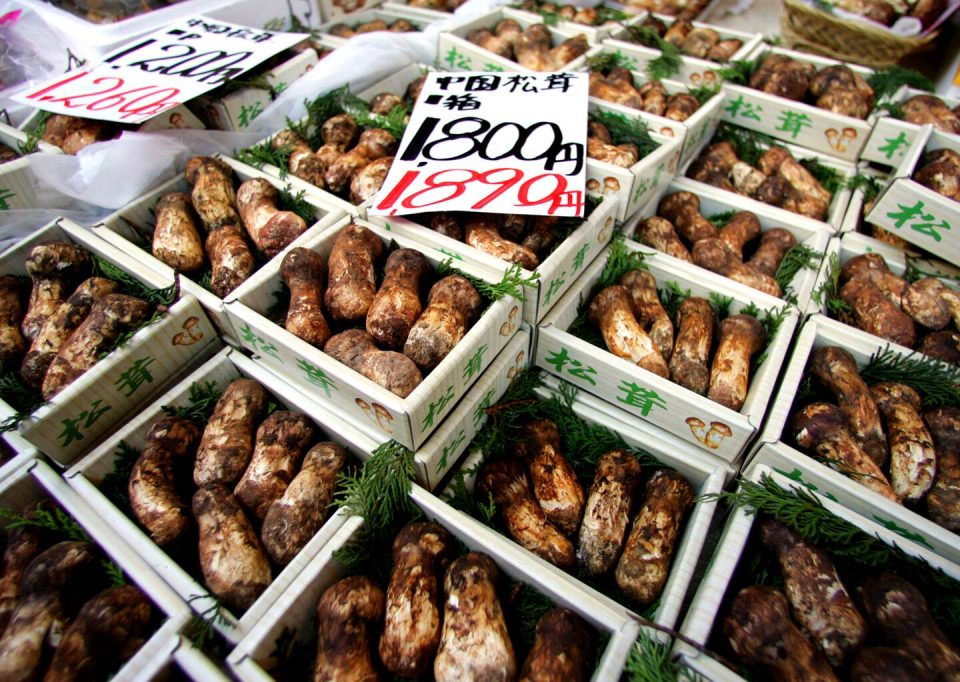Mushroom traders expected matsutake prices to start dropping around late August, when large quantities of lesser-quality mushrooms hit the market. But this has not happened. Instead, some production bases in Yunnan — the southwestern Chinese province that makes up a third of China’s matsutake output and about 70 percent of exports — have seen the harvest drop by up to 90 percent this year, local officials told the Chinese financial outlet Caixin.
Higher wholesale prices in China, coupled with logistics disruptions caused by the coronavirus and escalating tensions in the Taiwan Strait, are driving up the cost of matsutake mushrooms at the dining table. At the Mushuihua mushroom market in Kunming, the capital of China’s Yunnan province, the matsutake is sold for about $70 a pound — still much cheaper than most Japanese varieties, though prices have doubled in the past 12 months.
“The harvest last year was already low, but this year it is significantly lower,” said Zhao Jiuen, a mushroom wholesaler in Diqing, a mountainous region in Yunnan.
“There is no sign [prices are] going lower any time soon,” he said, even as he added that the quality of this year’s harvest “sucks, too.”
Scientists blame the scarcity on climate change, with huge swaths of China scorched by the fiercest heat wave in 60 years.
Yunnan, like many provinces in southern China, has experienced its warmest and driest summer since Beijing established official weather records in 1961. Zhaotong, a mountainous city in the province’s north that is known for mild weather, logged a record 111.2 degrees Fahrenheit in July. A county in Zhaotong has started rationing drinking water amid a drought.
“Extreme weather like this year’s has a detrimental effect on matsutake growth and quality, and climate change in the longer term will definitely make the yield more unstable,” said Xu Jianchu, a Chinese ethno-ecology professor who also serves as a scientist at the World Agroforestry Center.
The relatively warm winter and dry spring in China has not helped the mushroom’s harvest. The matsutake, which grows close to pine trees in high-elevation regions and is affected by long-term weather patterns, is “more vulnerable and sensitive” to environmental changes than other types of mushrooms, he said.
But climate change may not be the only cause of the matsutake’s precarious decline, Yang Xuefei, a biologist at the Chinese Academy of Sciences, wrote in a 2012 study published in the journal Fungal Diversity. She said the overharvesting of the species in some regions had contributed to a 5 percent output decline annually since the late 1990s.
In 2020, the matsutake was designated as a threatened species by the International Union for Conservation of Nature. A year later, China added it to a protected species list.
In Japan, where the annual yield of matsutake had plunged by 95 percent since 1941, according to one 2008 study, researchers are trying to establish an artificial cultivation technique, but with limited success.
In China, farmers try to help the mushroom grow and maximize financial gain by spraying water in its vicinity and adjusting fallen leaf cover. But those efforts are largely futile in the face of a major drought like the one the country is facing.
“The matsutake is vital to my business and the local economy, so I do hope the situation is better next year,” said Zhao, the mushroom trader.


